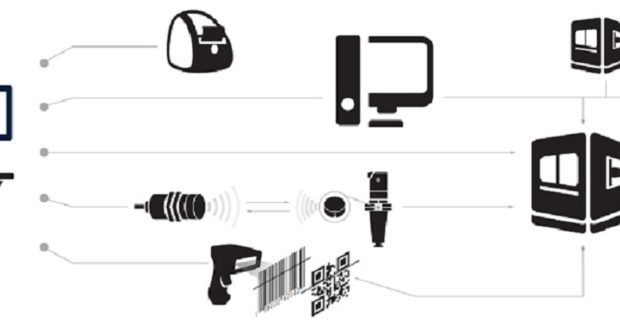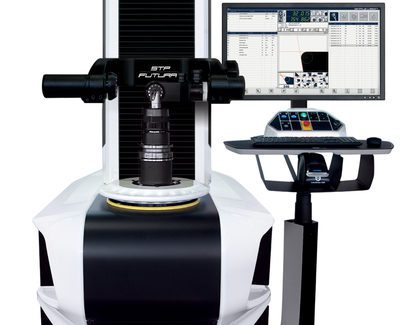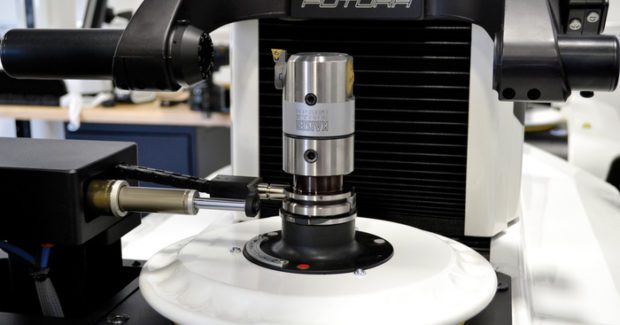Tool Measuring Systems and RFID Working: A Powerful Combination
Efficiently moving information around your shop floor is more important than ever. Connected through RFID, a shop can now use a tool presetter to monitor things never monitored before and use that data to fine-tune processes, reduce inefficient costs like scrap and waste, and make the factory floor smarter, streamlined, far more efficient and competitive.
Posted: May 29, 2019
How can you get the most out of an investment for your shop? With where we are today, it’s a valid question; workforce demographics are shifting and the competition for talent is fierce. At the same time, many manufacturers are trying to reduce their carbon footprint and increase productivity without replacing personnel with automation, so figuring out how to produce the most amount of parts with the least amount of waste – in terms of both time and material – is important. More and more, the answer comes down to your data. You may ask, “What data?!” But don’t worry, I have some ideas about where you can start. Take a moment to think about if you had data on a tool’s dimensions, usage and whether a certain assembly was running out. Now imagine how you could use that information to expedite setup time in the tool crib, reduce scrap and waste, even track what’s happening on the floor. That’s the kind of information a tool presetter helps you capture and leverage.
Taking this a step further, by presetting tools offline you can actually help your shop communicate and gather information to create reports and track where you’re allocating money. This data can then be used to optimize inventory management and reduce tooling costs. Consider the following scenario: A shop starts to notice they’re going through $5,000 a month in carbide, with incremental growth in the last few months. Unsure of the reason why this is occurring since they aren’t ramping up production, they turn to the gathered data from their presetter to learn more. That information can help pinpoint whether the extra costs are due to a spindle that’s starting to wear or maybe a tool holder that’s running out. With knowledge of the real problem, they can refocus where they spend in future months. When it comes to optimizing how machining operations function, a presetter and tool management system can benefit factories large and small.
While most people believe a presetter is more for large shops, like an automotive plant, I’ve actually worked with relatively small shops that have multiple machines all manufacturing the same part and moving it down the line until it’s ready to be packaged and sent to that automotive manufacturer. At the end of the day, the size doesn’t matter as much as the ability of the machines to communicate and transfer the data. With the Internet of Things (IoT) driving competitiveness, the need for efficiently moving information around the floor is more important than ever. There are multiple options for transferring information via USB, Ethernet, Bluetooth® and RFID (Radio Frequency Identification), which is an interesting one because a tool assembly’s data can remain with the tool on an embedded chip. RFID is probably the most accurate means of transferring tool data because it eliminates a ton of room for error and allows you to track the life, or expected obsolescence, of a cutting edge or holder. Even though that data can vary by materials, feeds or speeds, the tool is maintaining the information as it is utilized.
Let’s pretend your shop is set up with RFID and your machines have the ability to feed back their tool life values. From the tool crib, these values can be monitored and prompt the tool crib personnel to set up the next tool when a warning level is reached. With preset values stored on the RFID chip, the tool can be identified before it goes into the machining center and stops production because it has reached the end of its useful life. RFID and its implementation will help error-proof your manufacturing process. All tool information that your machines require now resides on the actual tool holder – this could be as small as a single serial number or hundreds of fields for complex 5-axis machines. Even if the tool ends up in the wrong machine, the correct information is still available.
RFID is just one more way manufacturing is becoming more intelligent. This seamless way to transfer data allows us to monitor things we’ve never monitored before and use that data to fine-tune processes and reduce inefficient costs like scrap and waste. Even if most shops don’t reduce their tooling costs or tooling budget, they can save money on the little nuts or single cutters that are currently adding up dollar signs. While tool presetters may be an upfront investment, it’s one that can enable you to get more production out of the machines you already own – which is well worth it. Not to mention that a tool presetter can make your factory floor smarter, streamlined and far more efficient, helping to keep your business competitive as new technologies emerge.














